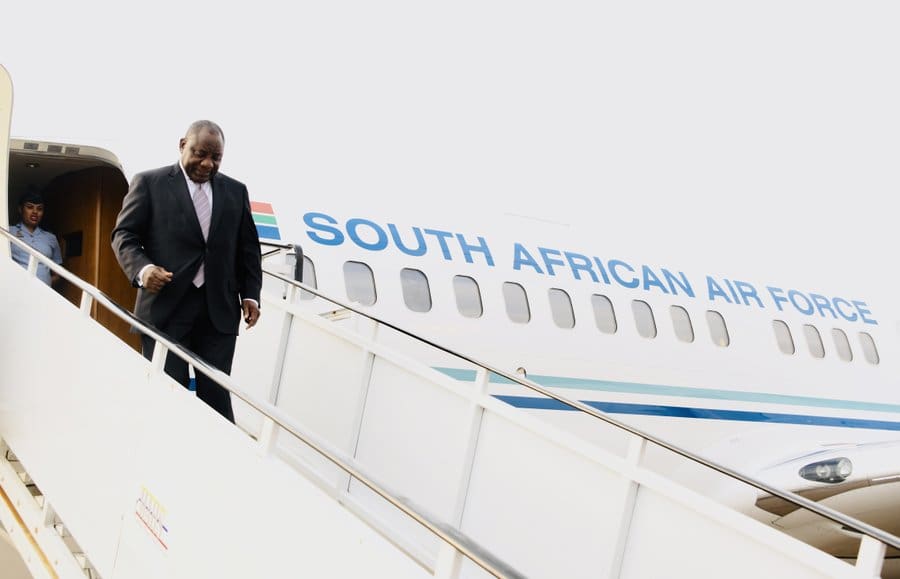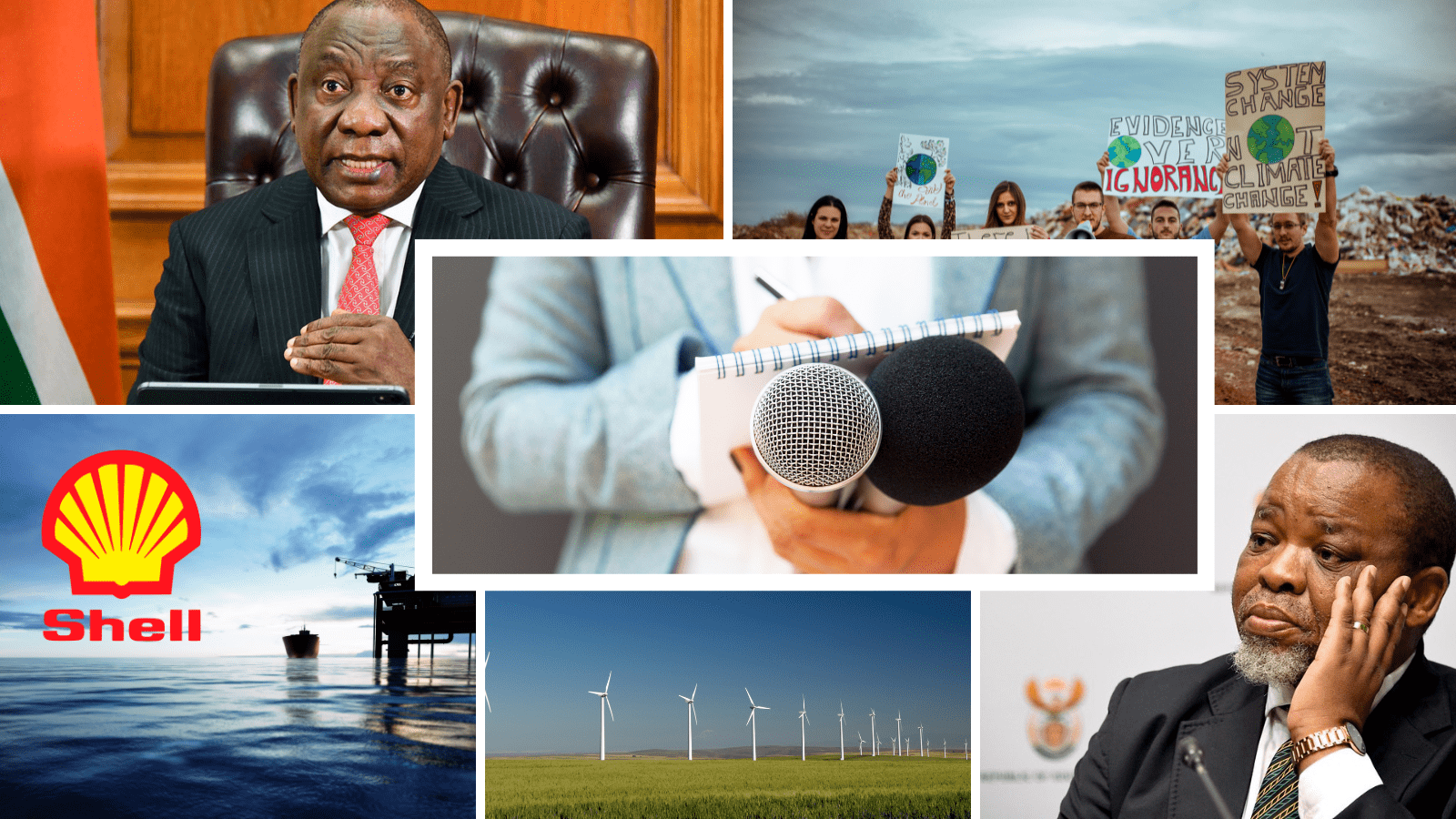This Monday, President Cyril Ramaphosa landed in Washington, DC, for the highly talked about meeting with United States President Donald Trump. The meeting between the two heads of state happened this evening (11:30 EDT) and was a high-stakes one.
Even with Trump blindsiding the South African delegation with an extensive clip of radical politicians like the EFF’s Julius Malema calling for the capture of land and visuals of crosses marking the deaths of white farmers, Ramaphosa was able to shift the narrative in the previously spiralling relationship with the US.
What was discussed, why did this even need to happen, and why are some South Africans so pressed about it?
Let’s unpack.
Was this meeting even necessary?
In short, yes.
Trump has been beefing with Mzansi for a while now. He has accused South Africa of “confiscating land, and treating certain classes of people VERY BADLY,” when the Land Expropriation Act was passed. Followed by his recent delivery of (ill-advised) promises with “Mission South Africa” (recap: he fast-tracked 49 Afrikaners to the US as “refugees” while halting similar initiatives for Afghan women in Taliban-run Afghanistan, Congolese families facing mass displacement, and the people of Sudan undergoing a genocide, amongst other groups). Trump’s recent infamous trade tariffs signalled the end of the AGOA and South Africa’s part in it. The US president has also cut billions of rands in funding for HIV and TB research and treatment. Not to mention, no one from his administration is showing up to the G20 this year in Johannesburg, with SA at the helm of the forum.
Diplomacy is the key to ironing out a few of these issues.
What happened in today’s meeting?
Ramaphosa came with a team. Trade Minister Parks Tau, International Relations Minister Ronald Lamola, Minister in the Presidency Khumbudzo Ntshavheni, and Agriculture Minister John Steenhuisen, to be specific.
The delegation also included SA golfing legends Ernie Els and Retief Goosen, along with South Africa’s richest man, Johann Rupert, founder of Swiss luxury brand Richemont, which owns Cartier. Ramaphosa noted they had brought a “14kg” book showcasing South Africa’s luxury golf courses as a gift, and golf references peppered the discussion had alleviated the atmosphere at often vital moments that could have gone sour. Also present at the meeting was Trump’s adviser, Elon Musk, who has previously shared claims about a so-called “white genocide” in South Africa.
“The president’s visit to the US provides a platform to reset the strategic relationship between the two countries,” South Africa’s presidency said in a statement.
So, did they do that? Kind of.
- On trade and investment, Ramaphosa had some things to say
Early on, Ramaphosa tried to focus on trade and investments. “We want to advance more trade between the two of us,” he said. “And we hope that you will be able to fuel that engagement during our talks…And we also want to discuss issues that have to do with how we promote further investments in both countries,” he said.
Other than this, noting the need for continued foreign direct investment in South Africa to help address the violent crimes plaguing all South Africans and reminding Trump that South Africa’s second-largest trading partner is the US and is crucial, the conversation quickly went to the elephant in the room: this alleged “white genocide”.
- And Trump was prepared with a show-and-tell about it
Trump played videos featuring South African opposition politician Julius Malema singing a song which translates to “Shoot the Boer”, referring to white South Africans, followed by another video showing a burial site of white farmers. “It’s a terrible sight, never seen anything like it”, Trump said in the background as the video played.
Ramaphosa was not so quick to agree. He reinforced that South Africa is a democratic country that allows people to express themselves freely, highlighting victims of crime include black people. The successful charm offensive lay in the delegation’s makeup: several wildly successful white South Africans, Ramaphosa, who is a skilled negotiator, and DA leader John Steenhuisen, who is white, the head of the country’s largest opposition party and in charge of the country’s agricultural portfolio.
Steenhuisen said most farmers want to stay in South Africa and do not intend to leave. He spoke about how the country has worked towards ensuring white farmers are safe.
Els said he’s a proud South African but would love to see things get better in his home country. “We wanted to come here to meet you and see the way forward to see our nation flourish,” Els told Trump.
And billionaire Rupert told Trump that South Africa has “too many deaths” across racial groups.”It’s not only white farmers,” he said. He then turned to Musk and said, “We need Starlink at every police station. Our main, main, real reason for being here is to foster trade and investment so that we are able to grow our economy with your support,” he says. Too bad that Musk insists that South Africa has racist business ownership laws, posting on X earlier this year that “Starlink is not allowed to operate in South Africa, because [he’s] not black.”
Given this video ambush, which was clearly prepared with a screen set up beforehand and Trump calling for the lights to be dimmed, the meeting could have devolved into the kind of blow-up that followed Ukrainian leader Volodymyr Zelensky’s White House meeting in February. But the South African delegation steered clear of responding to the provocation with heat, appealing rather to Trump as a partner and friend to South Africa.
Trump nonetheless insisted that white people in South Africa are being targeted, a far-right talking point that has been widely debunked. The South African delegations stressed the need for continuing dialogue rather than arguing over facts, which Trump traditionally does not respond well to.
I think we can all agree that was an extraordinary meeting. Some initial thoughts. 👇🏿#donaldtrump #cyrilRamaphosa #whitehouse #SouthAfrica #whitegenocide #farmmurders pic.twitter.com/rbgm672GYg
— Verashni Pillay (@verashni) May 21, 2025
- Both Trump and Ramaphosa say they want to see the end of the war in Ukraine
“That’s a bad situation,” Trump said, mentioning that he recently heard about President Zelensky’s visit to South Africa. “We would like to see the end of that war,” Ramaphosa said, telling Trump that he applauds the work he is doing to try to end the war.
Ramaphosa said South Africans have learned about “peace” from the late former president Nelson Mandela and want to impart this lesson in dealing with world conflicts.
- Trump doesn’t confirm if he will attend the G20 in Johannesburg.
Remember how we said no one from Trump’s administration will be attending the G20 this November? This meeting has not changed his RSVP status. Trump said that without the US, the G20 is “not very important”. But Ramaphosa pointed out that the G20 originated in the US and that it is crucial that they “continue to play a key role”.
Many South Africans aren’t happy that this meeting even happened
With all the tensions between the two countries recently, emotions are high. Many SAns have taken to Twitter (as we always do) to criticise Ramaphosa’s seeming willingness to jump when Trump commands and run to the States to justify policies and actions.
It’s actually so catastrophic that you’re this guy. Do you not see what direction Africa is meant to take? Traore, Malema, Nandi-Ndaitwah. African leaders are taking a stand against the West. You are being summoned to America by Donald to explain yourself on NOTHING. Why unje? https://t.co/tIHP7Gstw1
— Fighter 🇵🇸 (@NalediChirwa) May 17, 2025
But here’s the thing: this visit isn’t about Ramaphosa “explaining” himself, it’s part of how global diplomacy works.
Diplomacy is an age-old practice of governance, through managing international relations through dialogue, negotiation, and engagement, even with leaders or countries with whom one may not always agree. Yes, Ramaphosa’s trip comes when US-South Africa relations have been strained. But like leaders from Ukraine, France, and Brazil who have also made similar visits, Ramaphosa is doing his due diligence as a head of state.
While the televised meeting was a bit of a rollercoaster, it ended on a largely positive note, with a strong showing from a variety of South African leaders that left a strong impression. The South African delegation’s performance may just convince Trump to stop his assault on South Africa. That would be a huge boon for the country.
Lona is a recent graduate with an Honours degree in Journalism and Media Studies from Wits University. Passionate about storytelling, she is eager to learn, grow, and hone her writing skills.
- Lona Sokanyile
Verashni is passionate about empowering citizens to hold those in power to account. She was previously editor-in-chief of the Mail & Guardian and HuffPost South Africa, and won the CNN African Journalism Award, among others.
- Verashni Pillay
- Verashni Pillay
- Verashni Pillay
- Verashni Pillay
- Verashni Pillay
- Verashni Pillay
- Verashni Pillay
Kajal holds an MA in Journalism, Media, and Globalisation from the Ludwig Maximillian University of Munich. She has previous experience in African-focused humanitarian media and transnational newsrooms. The enduring power of words in shaping the narrative of tomorrow remains the foundation upon which she builds her career.






